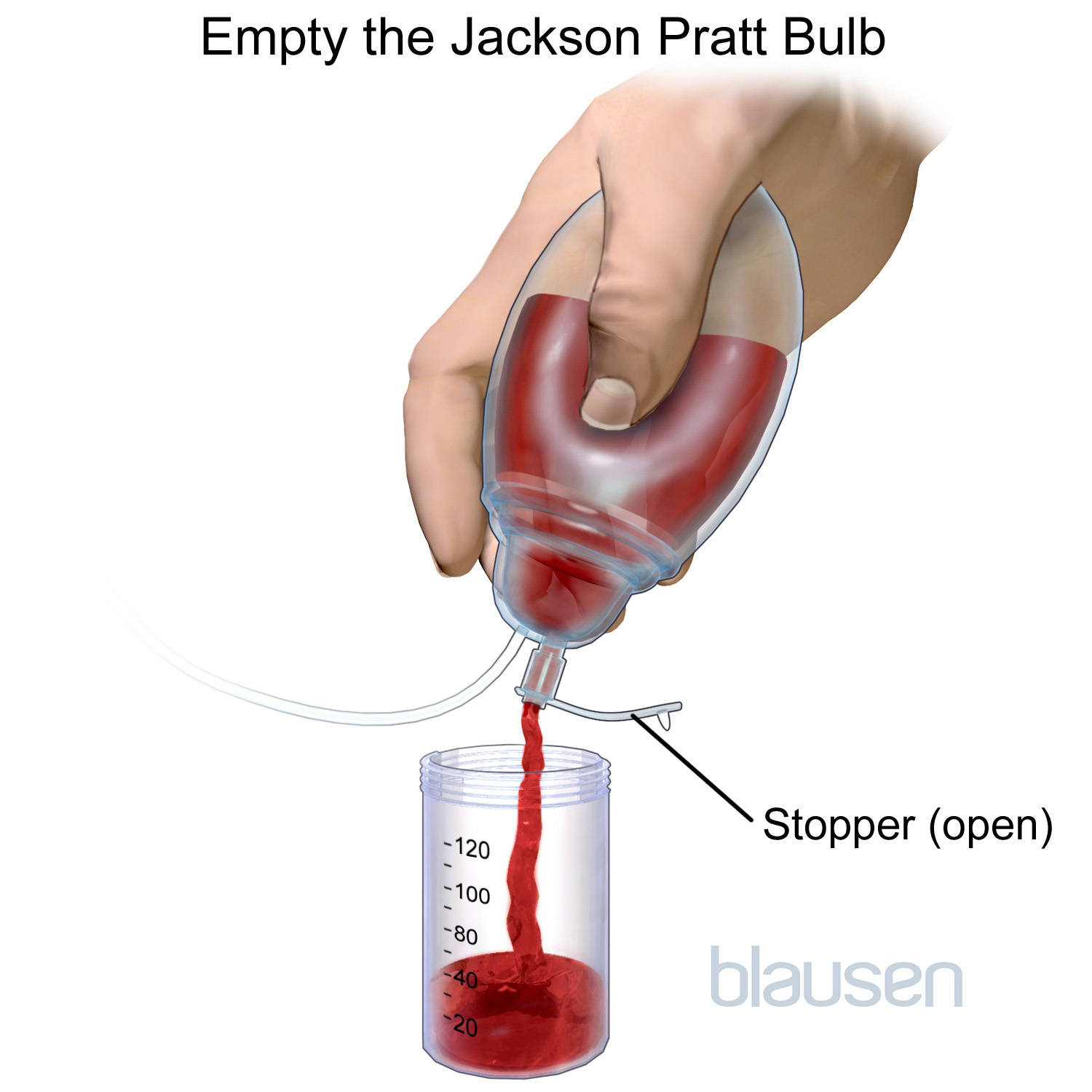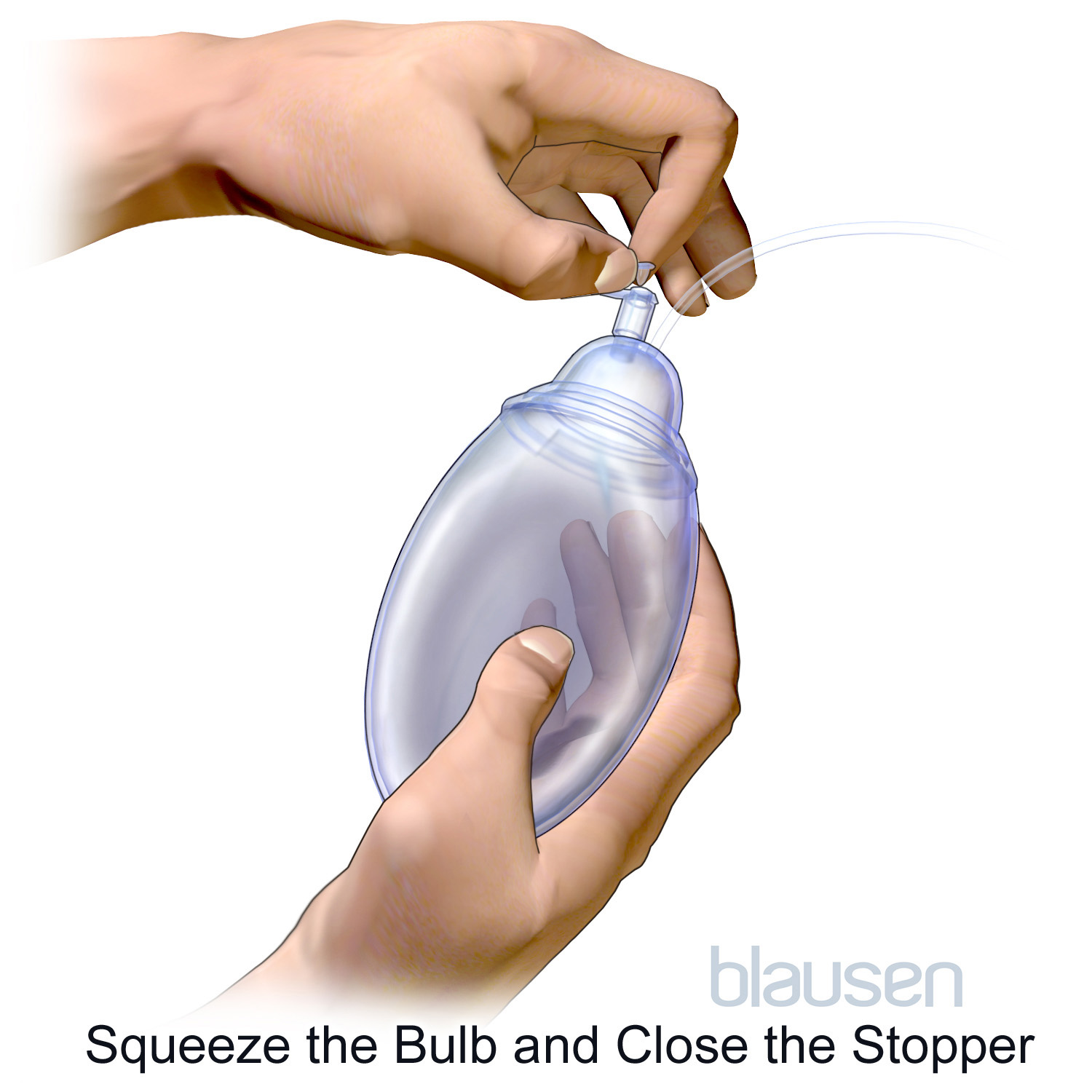Jackson-Pratt Drain
The Jackson-Pratt (JP) drain is the most commonly used surgical drain. Patients often need to wear drains after hospital discharge, so it’s important to understand proper at-home care techniques.
What You Need to Know
- The Jackson-Pratt drain is the most-used type of surgical drain.
- JP drains decrease swelling and reduce the risk of infection by providing a constant, low suction to pull fluid from a surgical incision site.
- Proper care for your JP drain at home is essential; be mindful of conditions such as new pain, a foul smell, drainage that is bright red or a milky, gray color, and fever.
Why might I need a JP drain?
A JP drain may be used to help remove fluid after some procedures, such as:
- Thyroidectomy (removal of the thyroid gland)
- Cosmetic and reconstructive surgery
- Neck dissection (removal of lymph nodes)
- Parotidectomy (parotid gland surgery)
- Laryngectomy

How does a JP drain work?
A JP drain empties excess blood and body fluid from your wound after surgery to decrease swelling and reduce the risk of infections and complications. It consists of three parts:
- A flattened or round tubing that drains fluid from inside the wound.
- Tubing connected to inside tubing that helps the drainage flow to a collection bulb outside the body.
- A collection bulb where the drainage is stored and emptied.
Caring for a JP Drain
Proper care of a drain at home is essential. Do not sleep on the side where the drain is, and avoid baths and swimming, though you may shower with the drain in place. If you are to be discharged from the hospital with a drain in place, you will be shown how to strip and empty it. Here are some guidelines:
Supplies Needed
- Alcohol swab
- Normal saline solution or soap and water
- Cotton-tipped applicator or swabs or a washcloth
- Measuring cup
- Safety pin
Emptying the Drain

Follow your health-care professional’s instructions. The fluid that collects in the drain will first be bloody, then lighten to a yellowish color. Drains should be “stripped” and emptied at least three times daily, or more often when the bulb becomes about half-full. Contact your doctor if you notice any foul-smelling or milky, white/gray-colored drainage.
- Wash hands thoroughly with soap and water before touching the drain.
- Gather all supplies.
- Uncurl any kinks in the tube. With one hand, firmly hold the base of the tube between your thumb and index finger. Don’t touch the incision. Put the thumb and index finger of your other hand on the tube, next to the first hand. Pinch your fingers together. Then, pull them along the tube toward the bag. This is called stripping the tube, and will help push any clogged fluid through the tube. You may find it helpful to hold an alcohol swab between your fingers and the tube to lubricate the tubing. If the tube still does not drain, call your doctor.
- Slowly open the stopper (away from your face). Empty the contents into the measuring container at least three times daily or when the drain is about half-full. Record the amount on the provided paperwork.
- Note the color and type of the drainage.
- Squeeze the bulb while it is uncapped until the insides of the bulb are touching. While squeezing, recap the bulb to create suction.
- Pin the bulb drain back to clothing with the safety pin to avoid accidental pulling.
- Discard the drainage into a toilet. Rinse and wash the measuring container with soap and water.
- Wash hands with soap and water.

Cleaning the Drain Site
The drain site may be cleaned while showering.
- Wash hands with soap and water.
- Clean the skin around the drain tube site with saline-soaked cotton tip applicators (or gauze), or with soap and water on a wash cloth, in a circular motion. Do not tug on the suture.
- Check the skin around the drain tube for redness, tenderness, swelling, warmth, unusual drainage and leakage.
- Pat the area dry.
JP Drain Removal
When the output of each drain is less than 25 milliliters in a 24-hour period (or another amount given to you by your clinician), make an appointment to remove your drain(s).
When should I contact my doctor?
Call your doctor if any of the following occurs:
- New or increased pain around the tube
- Redness, swelling or warmth around the incision or tube
- Foul-smelling drainage
- Fever of 100.4 degrees Fahrenheit (38 degrees Celsius) or higher, or as directed by your clinician
- Fluid leaks around the tube
- Drainage that changes from light pink to bright red blood or a milky, white/gray color
- A sudden increase or decrease in the amount of drainage (more than 30 milliliters in two hours or less)
- The drain falls out on its own.
- A clot in the drain prevents you from stripping the fluid into the bulb.
Head and Neck Tumor Center
The treatment of head and neck tumors is complex. At Johns Hopkins, our care goes beyond addressing the tumor. Our multidisciplinary team of cancer specialists is dedicated to treating your tumor with your overall health and life goals in mind.






